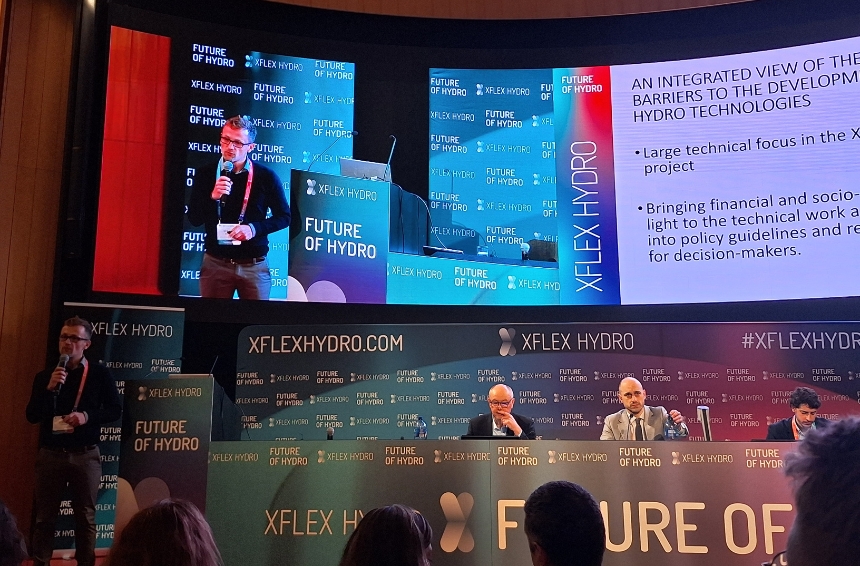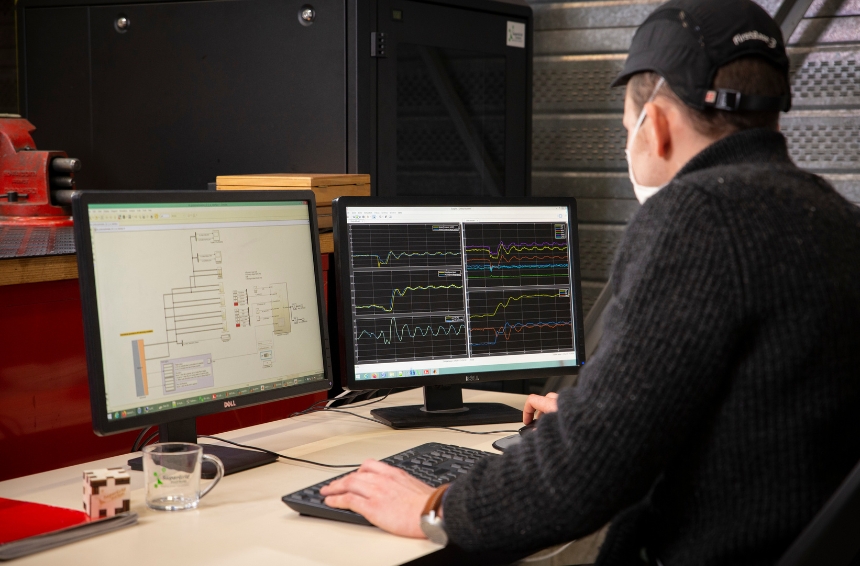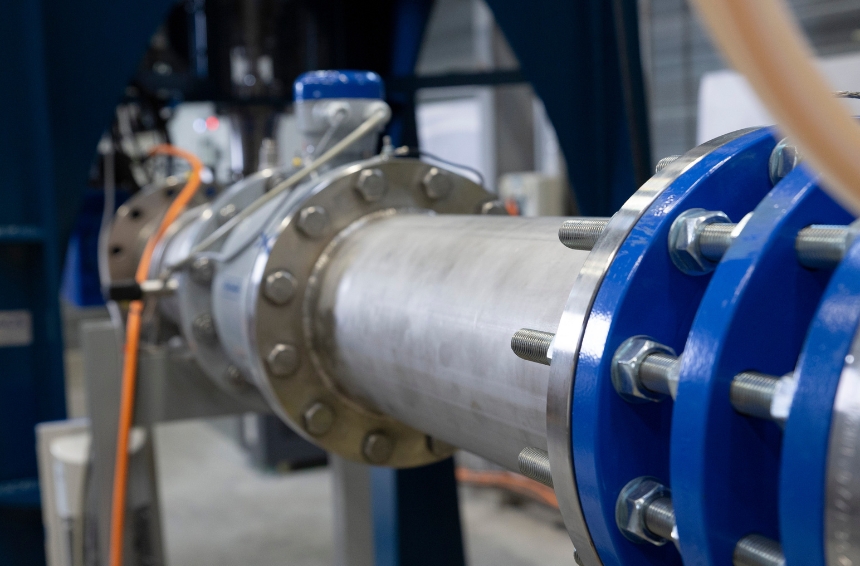That’s a wrap for XFLEX HYDRO:
4 years of improving hydropower flexibility
The XFLEX HYDRO project, an EU-funded research and innovation programme, uniting 19 leading organisations from the energy and hydropower sectors, has come to an end after 4 years. The project aimed to upgrade the capability of hydropower plants, rendering them more flexible with minimal transformation, thereby improving the quality and reliability of power in the grid and ensuring that local and regional power grids remain reliable and resilient to current and future energy supply disruptions. We are proud to have been a part of this project, notably leading the work package on market uptake, impacts, benefits & business model, and performing tests on a new turbine technology using our HydroPHIL platform.
Real-time testing of new operating sequences
Part of XFLEX HYDRO’s methodology to achieve its goals involved performing studies to determine the feasibility, and the short and long-term impact of flexibility upgrades on hydro equipment. SuperGrid Institute played an important role in this action, by mobilising our HydroPHIL test platform to test a new hydro technology, deep partial load variable speed transitions, with the aim of extending the turbine’s operating range within conventional pumped storage power plants.
We assessed the feasibility and relevance of these new operating sequences, defined the test plan and configured our platform to the characteristics of the test site, taking into account everything from the turbine, to its connection with the power grid.
“The advanced test platform and the expertise of the SuperGrid Institute team allowed us to test and optimise our preliminary control solution for the XFLEX Hydro project demonstrator, bringing to light problems that could not be seen with a pure software model of the controller”, Goekhan Sari from GE Vernova.
Our tests enabled us to validate the tested turbine’s control algorithms and suggest improvements for the supervision of the turbine within this extended operating range.
In-depth analysis of existing and future ancillary services markets
Another major aspect of the XFLEX HYDRO project’s goals was to define the economic and socio-environmental benefits of flexible technologies and provide guidelines for the deployment and exploitation of hydropower. As group leader of work package 11, we led the work on flexibility revenues and future markets, performing an in-depth analysis of the cost-benefits opportunity associated with the implementation of flexibility technologies in existing hydropower plants and analysing the evolution of existing ancillary services markets.
We looked at the costs of hydro flexibility as well as the outlook of future reserve markets as a means of renumerating these investments. We estimated the demand and the price of the reserve services in the long term and modelled the long-term revenue of XFLEX HYDRO flexible technologies, assessing their profitability.
We observed a fierce competition for flexible hydro technologies within the reserves market coming from batteries, provoking reflections on outsourcing elements of the supply chain outside of Europe.
Our analysis also highlighted that the European short-term markets for energy and services, although very efficient in providing optimal dispatch of energy at an attractive price, do not provide sufficient visibility for long-term investments. It seems appropriate to pursue the implementation of long-term contracts in the European electricity markets, for sustainable flexibility.
Next steps
XFLEX HYDRO’s final results were presented in Lausanne, on the 31st of January and the 1st of February. On the programme: the business case for upgrading hydropower, enabling flexibility in pumped storage plants, enhancing conventional hyrdopower plants, embedding flexibility in decision-making, ideas and proposals to make get the most of hydropower as we prepare for energy transition.
This important project has produced rich, tangible results, demonstrating the feasibility and importance of introducing new technologies to hydropower plants, and the impact these technologies can have on the overall flexibility of the power grid. Moving forward the project’s results will provide the foundation for future European projects, while certain of the project’s real-life demonstrators will continue using XFLEX HYDRO’s flexibility technologies in their day-to-day operations.

Moving forward, SuperGrid Institute will continue to work on the tools needed to asses hydropower flexibility revenues and to provide tests and services via our unique HydroPHIL platform.
- Read more about XFLEX HYDRO’s work and results here:
- Recommendations towards the deployment of hydropower flexibility technologies
- Find out more about our work on Power Storage & Balancing:







